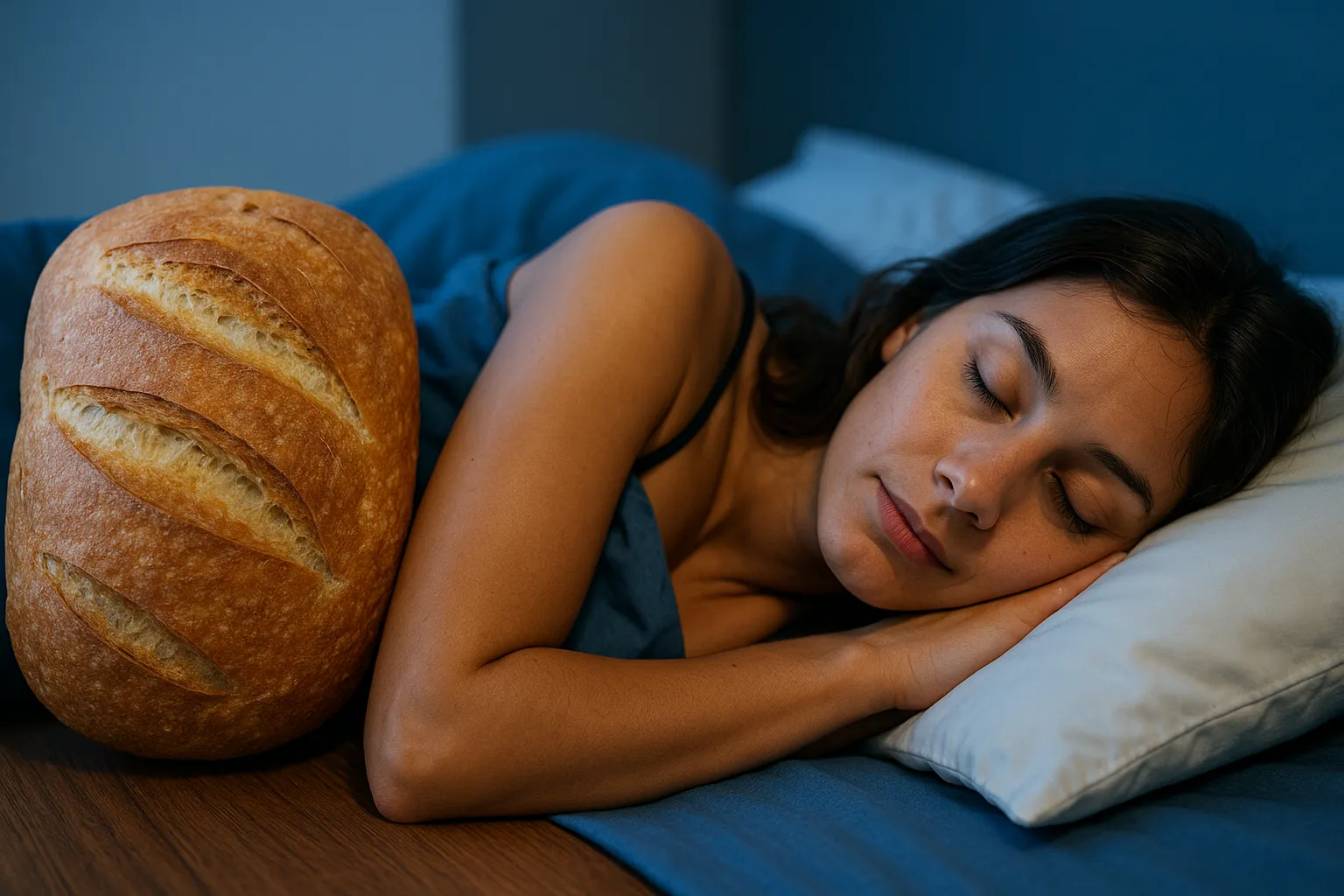Nature’s Lullaby: The Ultimate Guide to Using Essential Oils for Deep, Restorative Sleep
Discover the science of using essential oils for sleep. A comprehensive guide on the best oils like Lavender and Valerian, safety tips, and diffuser recipes for insomnia.

In an era defined by blue light exposure, high-stress work environments, and perpetual connectivity, sleep has become a casualty of modern life. According to the Centers for Disease Control and Prevention (CDC), one in three adults does not get enough sleep. While pharmaceutical interventions are common, there is a growing movement toward natural, holistic solutions to combat insomnia and sleep fragmentation. Among the most potent of these natural allies is aromatherapy using essential oils.
Essential oils are not merely pleasant fragrances; they are concentrated hydrophobic liquids containing volatile chemical compounds from plants. When used correctly, they act as a powerful bio-hack for the nervous system, signaling the brain to shift from a state of alertness to a state of rest. This comprehensive guide explores the science behind aromatherapy for sleep, the most effective oils to use, and safety protocols to ensure a restful night.
The Science of Smell: How Aromatherapy Affects Sleep
To understand why essential oils work, we must look at the biology of the olfactory system. Smell is the only sense that has a direct line to the brain's emotional center. When you inhale the molecules of an essential oil, they travel through the nose to the olfactory bulb, which is directly connected to the limbic system.
The limbic system, often referred to as the "emotional brain," includes the amygdala (responsible for processing emotions) and the hippocampus (responsible for memory). This explains why a specific scent can instantly trigger a vivid memory or a sudden shift in mood. Unlike the senses of sight or sound, which pass through the thalamus for processing before reaching the cortex, smell bypasses this relay station, offering immediate access to the brain's neurochemistry.
Research suggests that certain terpenes—the organic compounds found in essential oils—can interact with neurotransmitters. For example, Linalool, a primary component of lavender, has been shown to interact with the neurotransmitter GABA (gamma-aminobutyric acid), which helps quiet the brain and nervous system activity. By modulating these pathways, essential oils can lower heart rate, reduce blood pressure, and prepare the body for deep REM sleep.
Top Essential Oils for Promoting Sleep
Not all oils are created equal when it comes to sedation. While citrus oils like Lemon or Grapefruit are uplifting and energizing, the following oils are renowned for their sedative and anxiolytic (anxiety-reducing) properties.
1. Lavender (Lavandula angustifolia)
Lavender is the gold standard of sleep aids. It is the most extensively studied essential oil, with numerous clinical trials supporting its efficacy. A study published in the journal Evidence-Based Complementary and Alternative Medicine found that lavender increased the percentage of deep or slow-wave sleep in men and women. It helps stabilize mood and is gentle enough for most demographics, including the elderly.
2. Roman Chamomile (Chamaemelum nobile)
While you may be familiar with chamomile tea, the essential oil is exponentially more potent. Roman Chamomile is rich in esters, compounds known for their spasmodic and calming effects. It is particularly effective for "racing mind" syndrome—where anxiety prevents the onset of sleep. Its scent is sweet, herbaceous, and slightly fruity, often described as apple-like.
3. Valerian Root (Valeriana officinalis)
Valerian is the heavy lifter of the essential oil world. Be warned: it does not have a typically pleasant "spa" smell; it is musky, woody, and earthy. However, its effects are profound. Valerian contains valerenic acid, which inhibits the breakdown of GABA in the brain, inducing a state of calmness and tranquility similar to mild sedatives. It is best used in a blend to mask its strong odor.
4. Bergamot (Citrus bergamia)
Most citrus oils are stimulating, but Bergamot is the exception. Extracted from the peel of the inedible Bergamot fruit (a hybrid of lemon and bitter orange), it possesses unique calming qualities while still being mood-lifting. This makes it excellent for those whose insomnia is rooted in depression or heavy sadness. It helps clear emotional clutter before bed.
5. Cedarwood (Juniperus virginiana)
If you prefer woodsy scents over florals, Cedarwood is an excellent choice. It contains high amounts of sesquiterpenes, molecules that can cross the blood-brain barrier and improve oxygenation in the brain. Cedarwood triggers the release of serotonin, which the brain converts into melatonin—the hormone that regulates sleep cycles. Its grounding aroma creates a sense of security and safety.
6. Ylang Ylang (Cananga odorata)
Native to tropical Asia, Ylang Ylang is a heavy, sweet floral scent. It is particularly effective at reducing physiological arousal. Studies have shown that inhaling Ylang Ylang can significantly decrease blood pressure and heart rate, physical markers that are essential for transitioning into sleep. Due to its potency, it should be used sparingly to avoid headaches.
7. Vetiver (Vetiveria zizanioides)
Known as the "Oil of Tranquility" in India and Sri Lanka, Vetiver is extracted from the roots of a grass. It has a deep, smoky, earth-bound scent. It acts as a nervous system stabilizer and is often recommended for trauma or high-stress individuals who feel "ungrounded." It is physically relaxing and can help with restless legs.
Effective Application Methods
Using essential oils is an art. Simply opening a bottle isn't enough; you need an effective delivery system to get the molecules into your system.
Ultrasonic Diffusion
The most popular method is an ultrasonic diffuser, which uses water and electronic frequencies to create a fine mist of oil and water. This method humidifies the air (beneficial for breathing) while dispersing the scent.
- Dosage: Add 5–8 drops of essential oil per 100ml of water.
- Timing: Start the diffuser 30 minutes before you plan to sleep to prime the bedroom environment.
Topical Application (Massage)
Applying oils to the skin allows for absorption into the bloodstream. However, never apply undiluted essential oils to the skin. You must use a carrier oil (such as jojoba, sweet almond, or coconut oil).
- The Recipe: A 2% dilution is standard for adults. This equates to 12 drops of essential oil per 30ml (1 oz) of carrier oil.
- Where to apply: The bottoms of the feet (largest pores), the wrists, behind the ears, and the back of the neck.
The Pillow Spray
If you don't want to leave a diffuser running, a pillow spray is a great alternative.
- DIY Recipe: Mix 20 drops of Lavender, 1 tablespoon of witch hazel (or vodka) to help the oil mix, and 3 ounces of distilled water in a small spray bottle. Shake well before every use and mist your pillow lightly.
Aromatic Bath
Hydrotherapy combined with aromatherapy is a powerful sleep inducer. The warm water relaxes muscles, while the oils treat the mind.
- Safety Note: Oil and water do not mix. If you drop oil directly into the tub, it will float on top and can burn your sensitive skin. Mix 5–10 drops of essential oil into a tablespoon of carrier oil or full-fat milk before adding it to the bathwater to ensure dispersion.
Master Blends for Specific Sleep Issues
While single oils are effective, blending oils can create a synergistic effect where the sum is greater than the parts. Here are three recipes to try in your diffuser:
The "Knockout" Blend (For Deep Insomnia)
- 3 drops Valerian Root
- 3 drops Lavender
- 2 drops Cedarwood
The "Quiet Mind" Blend (For Anxiety/Overthinking)
- 4 drops Roman Chamomile
- 3 drops Bergamot
- 2 drops Clary Sage
The "Grounding" Blend (For Restless Sleepers)
- 3 drops Vetiver
- 3 drops Sandalwood
- 2 drops Lavender
Safety Considerations and Precautions
While natural, essential oils are potent chemical compounds and must be respected.
- Phototoxicity: Some citrus oils (like Bergamot, if not FCF-free) can make skin sensitive to sunlight. If applying topically, avoid UV exposure for 12 hours, though this is less of a concern at bedtime.
- Pets: Many essential oils are toxic to dogs and especially cats (who lack the liver enzyme to process them). Tea Tree, Peppermint, and Ylang Ylang can be problematic. Always diffuse in a well-ventilated area and ensure your pet has a way to leave the room.
- Pregnancy and Children: Always consult a healthcare provider before using oils during pregnancy or on infants. Dilution rates for children should be much lower (0.5% to 1%).
- Quality Matters: The essential oil industry is unregulated in many regions. Look for oils labeled "100% Pure Therapeutic Grade" and check for the Latin name on the bottle. Avoid "fragrance oils," which are synthetic and offer no therapeutic benefit.
Creating a Holistic Sleep Ritual
Essential oils are most effective when part of a broader sleep hygiene strategy. Aromatherapy acts as a cue—a Pavlovian trigger—telling your brain it is time to shut down. To maximize results, combine your essential oil usage with:
- Darkness: Use blackout curtains or a sleep mask.
- Temperature: Keep the room cool (around 65°F or 18°C).
- Digital Detox: Avoid screens for one hour before bed to reduce blue light exposure.
By integrating the chemical power of plants with healthy habits, you can reclaim your rest. Whether you choose the floral sweetness of Lavender or the earthy grounding of Vetiver, nature provides a potent pharmacy for those seeking refuge from the sleeplessness of the modern world.


